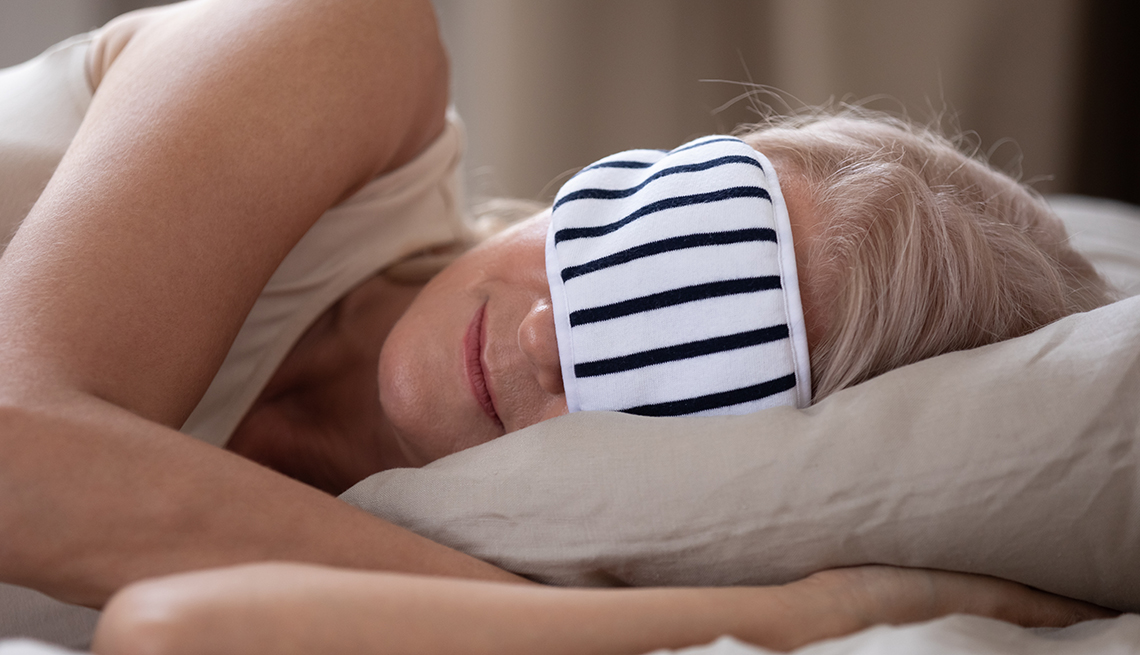Staying Fit
Vacations are a break from everyday stressors such as your job or other responsibilities. You might assume that this break would mean that you will get a great night’s sleep. But when you’re traveling, you are away from your routines and your bedroom, which can lead to difficulty sleeping.
The accommodations might have a bed or pillow that isn’t comfortable. You could have some other issues with your room, which might be too bright or noisy. Traveling to another time zone also could lead to sleep troubles. We asked experts for tips to improve your sleep while you are traveling so you can enjoy your vacation and feel rejuvenated at the end of it.


AARP Membership— $12 for your first year when you sign up for Automatic Renewal
Get instant access to members-only products and hundreds of discounts, a free second membership, and a subscription to AARP the Magazine.
1. Prepare for jet lag
If your trip is in another time zone, you might experience jet lag or fatigue from not adjusting to the new time zone. “Even just an hour time zone difference can be disruptive to people’s sleep,” says W. Chris Winter, M.D., 50, a neurologist and owner of Charlottesville Neurology and Sleep Medicine, a sleep clinic in Virginia that offers sleep consultations and sleep studies. The author of The Sleep Solution: Why Your Sleep Is Broken and How to Fix It explains that as you age, it’s possible you will be more sensitive to jet lag.
Hotels add tech and other features for better slumber
Hotels are waking up to the idea that what many vacationers want is a good night’s sleep. Enter “sleep tourism,” where a night in is the key attraction. The National Sleep Foundation estimates that 35 percent of U.S. adults get less shut-eye than the minimum recommended seven hours per night. And COVID may have made things worse.
The Journal of Clinical Sleep Medicine found that 40 percent of survey participants reported a reduction in sleep quality since 2020. “So many people developed ‘COVID-somnia,’ ” says Rebecca Robbins, a sleep scientist at Brigham and Women’s Hospital in Boston and coauthor of Sleep for Success! Also, she notes that sleep disorders increase with advancing age and may lead to deteriorating health.
“For so long, sleep has been the forgotten stepsister to exercise and nutrition,” Robbins notes. “It’s the last frontier of health and wellness.”
—Veronica Stoddart
If you know that you are going to travel to a different time zone, you can help your body adjust to the change by using light or time devices about a week before you travel. Winter says if you use glasses with blue light at certain times throughout the day before you travel and at your destination, that will help you adjust to the new time zone. Shelby Harris, a clinical psychologist and director at Sleepopolis, a website with comprehensive sleep-industry information, suggests using apps that will help you adjust to new time zones before you travel. “Five or six days in advance, adjust your bedtime and wake time so it’s easier for you to sleep once you get there,” she says.
2. Pack comforts from home and other sleep items
If you can, pack your own pillow, blankets or other items that help you sleep at home and will help you adjust to your vacation accommodations. You already know these items are comfortable, whereas a hotel pillow might be too hard or soft. Plus, the scent of your items might help you feel relaxed. “We need that feeling of comfort and relaxation to be able to fall asleep and stay asleep,” says Lauri Leadley, 57, the founder and president at Valley Sleep Center, a sleep health management clinic in Arizona.
Some other items you might want to pack are a night-light, noise machine or earplugs, and a sleep mask. Harris says she always travels with her “old-school sound machine.” If you don’t have one, she suggests asking at the hotel to borrow one, or you can download a sound machine phone app. She also recommends using earplugs or noise-canceling headphones.


































































